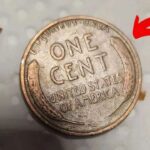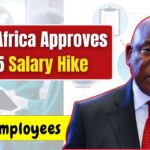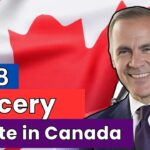The £165 Cost of Living Payment in June 2025 is the UK government’s latest step to ease the financial burden of families hit hard by the economic downturn of 2024-25. With fluctuating inflation, rising energy bills, and declining household incomes, many families have been struggling to make ends meet. In response, the government has introduced this one-time support payment of £165 to provide some relief to low-income households.
While this £165 amount may not fully cover the impact of inflation, it’s still a welcome gesture for families facing persistent economic challenges.
Who Will Receive the £165 Cost of Living Payment?
The Department for Work and Pensions (DWP) has set clear eligibility criteria for this £165 Cost of Living Payment. To qualify, you must already be receiving at least one of these benefits:
- Universal Credit
- Pension Credit
- Income-based Jobseeker’s Allowance (JSA)
- Income-based Employment and Support Allowance (ESA)
- Income Support
- Working Tax Credit
- Child Tax Credit
A significant change this time around is that you must have been receiving these benefits continuously between January 26, 2025, and February 25, 2025. Citizens Advice Birmingham’s Margaret Willoughby explains that this new, stricter eligibility period could impact the number of people who qualify. The government estimates around 8 million families will benefit, which is fewer than in previous support schemes.
When and How Will the Payment Be Made?
The £165 Cost of Living Payment will start hitting bank accounts from June 8, 2025 for DWP benefits recipients. Most families can expect the payment within two weeks, labeled “DWP COL” in their bank statements.
For those who receive only HMRC tax credits and no other DWP benefits, the payment will be issued from June 16, 2025, and will appear as “HMRC COL” in their accounts.
Important Warning About Fraud
The government is warning people to be alert to scams. Thomas Hargreaves from the DWP cautions: “If someone calls or messages you claiming to be from the government and asks for your bank details, don’t trust them. The government will never ask for bank details for this payment.”
Why Was the £165 Cost of Living Payment Needed?
While the inflation rate in the UK has eased slightly, many households continue to face severe economic strain. The Office for National Statistics (ONS) reports that:
- Average household income has dropped by 2.9%.
- Food inflation, although down to 4.7% in January 2025 from its March 2023 high of 19.2%, is still concerning.
- Energy bills remain much higher than pre-pandemic levels.
Dr. Eleanor Jameson, an economist, explains: “Though there’s some improvement in the numbers, households are still facing a crisis. Many families have lost their savings and are still struggling to recover.”
Also Read – SASSA Confirms 2025 Child Grant Increase – See Payment Schedule & Official News
How Does This £165 Payment Compare to Past Schemes?
The £165 Cost of Living Payment is significantly lower than previous assistance payments. For example, during the 2022-23 energy crisis, payments of up to £1,350 were provided. According to Robert Chott, former chief of the Office for Budget Responsibility, the reduced payment reflects the government’s effort to manage its fiscal deficit. He notes that while conditions have improved, the government still aims to help those most in need, albeit at a lower cost.
Another major change is in how eligibility is determined. Previously, you only needed to receive benefits on a specific date. Now, eligibility requires receiving benefits throughout the entire one-month period from January 26 to February 25, 2025.
Is £165 Really Enough?
Reactions to the £165 Cost of Living Payment have been mixed:
- James Bartle, 58, Cardiff, a Pension Credit recipient, says: “£165 is a help, but with my energy bill alone at £90 a month, it’s just a small boost.”
- Karen Wilson, Manchester, a single mother and Universal Credit recipient, adds: “It means I can buy my kids’ school supplies without cutting back on food. It’s some relief, but not enough to solve everything.”
- Michael Ashford, Director of the Money Advice Trust, says: “This payment is a temporary lifeline, but it’s not a permanent solution. We need long-term strategies.”
What’s Next After the £165 Payment?
So far, the government has not confirmed if there will be further support payments after the £165 Cost of Living Payment. A Treasury spokesperson said any future plans will depend on the economic climate and available resources.
Meanwhile, groups like the Trussell Trust are preparing for ongoing demand. William Davies, director of the Trust, says: “This payment is welcome, but food banks and support services expect continued high demand throughout 2025.”
The Institute for Fiscal Studies estimates that many low-income families may not fully recover until mid-2026.
Conclusion
The £165 Cost of Living Payment in June 2025 is a modest but important step to help families navigate the ongoing economic challenges. Eligible recipients should stay vigilant against fraud and check with the DWP or HMRC if the payment doesn’t arrive.
While this payment is a welcome relief for many, it’s clear that it’s only a temporary measure. Real, long-term solutions will be needed to bring genuine financial security to families across the UK.
FAQs on the £165 Cost of Living Payment in June 2025
Q. What is the £165 Cost of Living Payment?
A. It’s a one-time payment by the UK government to help low-income households with the rising cost of living.
Q. When will the payment be made?
A. Payments will begin on June 8, 2025 (DWP benefits) and June 16, 2025 (HMRC tax credits only).
Q. How will I get the payment?
A. It will be directly deposited in your bank account, labeled either “DWP COL” or “HMRC COL.”
Some Important Link
| Telegram Group | Click Here |
| WhatsApp Group | Click Here |
| Home Page | Click Here |










